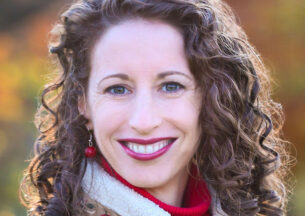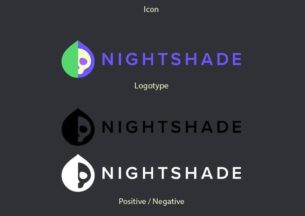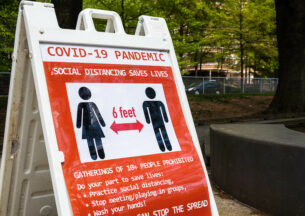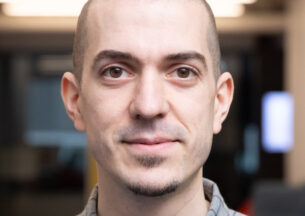DSI Discovery Challenge Awardees Train Data Science on Medicine, Clean Water, and Education
As data science matures as a field, its power to tackle major challenges across all disciplines and industries rises. However, unlocking novel, powerful innovations and solutions for interdisciplinary challenges that benefit, and don’t inadvertently harm stakeholders, is a non-trivial task that often requires matchmaking, stakeholder engagement, and a plan for coordination.
The new Discovery Challenge program from the Data Science Institute (DSI), with support from UChicago’s Office of Research and National Laboratories Joint Task Force Initiative, helps build the partnerships, open source software, and tools that will make these advances possible. By combining experts from across the UChicago campus, its national laboratory partners, and government, non-profit, and industry collaborators, these projects target transformative impact in medicine, public health, molecular engineering, genomics, and education.
“Universities are uniquely positioned to address socially relevant research in data science, said Julia Lane, Executive Director for Research Partnerships & Strategy at the DSI. “However, translating technology into real-world impact often requires a platform such as DSI that allows stakeholders to be part of the research and innovation process.”
“These Discovery Challenge projects will provide sterling examples of the potential for engaging the interdisciplinary strengths of the University of Chicago to create powerful, societally relevant research while also further defining the field of data science,” said Nick Feamster, Faculty Director of Research at the DSI and Neubauer Professor of Computer Science at the University of Chicago.
The first group of Discovery Challenge collaborations will build a database of social factors that influence health and disease, combine machine learning and computer vision to improve personalized cancer treatment, develop new probes for sensing and removing water contaminants, and incorporate AI-driven tutorials into radiology education.
Through the program, each project received up to $250,000 to accelerate the development of transformational AI and data science research and technologies that deliver high impact results to society. In addition to funding, the projects will also benefit from DSI advanced computing resources, corporate and community engagement, and access to software development expertise.
ADVancing the SOCiome For SociAl and HealTh Equity (ADVOCATE)
The Challenge: Social factors influence health and disease. How can we use them in data-driven medicine?
Samuel Volchenboum, Ellen Cohen, Stacy Lindau, David Meltzer, Doriane Miller, Lainie Ross, Julian Solway, and Dana Suskind, Medicine
Luc Anselin, Center for Spatial Data Science
Kathleen Cagney, Sociology
Sanjay Krishnan, Pedro Lopes, and Anoop Mayampurath, Computer Science
Jonathan Ozik, Argonne
External Partnerships: Chicago Department of Public Health
Beyond the biological mechanisms of disease, social, environmental, behavioral, and psychological factors play a critical role in human health. These factors – that we collectively call the “sociome” – interact with human biology to cause or exacerbate disease and injuries and may disrupt wellness. But in contrast to genomic and clinical data, sociome factors have not been comprehensively collected, codified and quantified for the large-scale data mining and analysis techniques transforming modern healthcare.
This collaboration will build the scalable and extensible infrastructure and architecture that will ultimately assemble, quantify, and organize the entirety of social context experienced by every individual. Once catalogued, researchers can link this information to biologic and clinical data at individual and population scale to understand, predict, and treat health and health-related outcomes. A paradigm project will use this approach to build predictive models for children with asthma on the South Side of Chicago, hopefully leading to better immediate and long-term interventions to minimize disease severity.
Machine Learning to Improve Targeted Cancer Therapy
The Challenge: Can a combination of AI, genomics, and pathology create more effective personalized cancer treatment?
Samantha Riesenfeld, Molecular Engineering
Alexander Pearson, Medicine
Greg Shakhnarovich, TTIC
Michael Maire, Computer Science
Thomas Brettin and Yitan Zhu, Argonne
Robert Grossman, Medicine/Computer Science
Nicole Cipriani, Pathology
Advances in genomics have created many new cancer therapies that target specific genetic or molecular features, raising the potential for personalized treatment that improves effectiveness and decreases side effects. However, the majority of patients treated with targeted therapies do not respond as predicted, and detailed patient genomic information is expensive to acquire.
This collaboration proposes to improve targeting of cancer therapies by developing new AI approaches that recommend the best treatment based on a combination of genetic and pathology data. Researchers will build new methods drawing upon computer vision and machine learning to gather essential contextual information about individual cancers from tumor samples, utilizing both genomic and image-based features. This work will advance both artificial intelligence and cancer-focused data science by developing innovative solutions to emerging machine learning problems in cancer research, ultimately benefiting patients through more targeted, effective treatments.
AI-Assisted Molecular Engineering to Detect and Remove Water Contaminants
The Challenge: How can we better detect and remove dangerous contaminants from water?
Junhong Chen, Stuart Rowan, and Andrew Ferguson, Molecular Engineering
Sang Soo Lee and Chris Benmore, Argonne
Seth Darling, Molecular Engineering/Argonne
Rebecca Willett and Eric Jonas, Computer Science
External Partnerships: Current, Metropolitan Water Reclamation District of Greater Chicago
Water-contaminating chemicals such as polyfluoroalkyl substances (PFAS) may lead to severe environmental and health effects, such as low infant birth weight, cancer, and thyroid hormone disruption. Current approaches for detecting these chemicals are expensive, time-consuming, and require bulky equipment and skilled personnel. The vast number of contaminants — over 4,000 in the PFAS family alone — also prohibit conventional development of biological or chemical probes.
This initiative will develop a platform using molecular simulation, organic synthesis, and artificial intelligence to rapidly explore the large molecular space of potential PFAS probes and efficiently identify, design, and fabricate new chemical probes for sensing and removing contaminants from water. The work will also advance data science, characterization at the Argonne Advanced Photon Source, and high-performance simulation, and could potentially transfer to the screening and removal of other water contaminants, such as pharmaceuticals, to advance global public health.
AI-Driven Tutorials for Radiology Student Training
The Challenge: Can the success of AI for radiology diagnosis help train tomorrow’s radiologists?
Chenhao Tan and Yuxin Chen, Computer Science
Aytekin Oto, Maryellen Giger, and Aritrick Chatterjee, Radiology
External Partnerships: Nvidia
Computer-aided diagnosis of radiological images such as MRIs and X-rays was one of the first successful applications of AI to medicine. In this “human-in-the-loop” paradigm, computer vision models trained on large datasets of medical images detect potential signals of disease and make diagnoses, which are then manually checked by radiologists. This collaboration seeks to extend that loop by using computer models to help train future radiologists, via AI-driven tutorials that explain the patterns and predictions these algorithms have drawn from big data.
Using prostate MRIs as its initial focus, the researchers will develop an “AI teacher” that provides imaging examples alongside explanations of AI predictions. These tutorials will allow students to learn new AI-derived insights about image features to make diagnoses themselves, while familiarizing them with working in tandem with AI assistance. If successful, the tutorial concept could be transferable to training environments in pathology and other medical fields, as well as disciplines such as law and scientific research.












